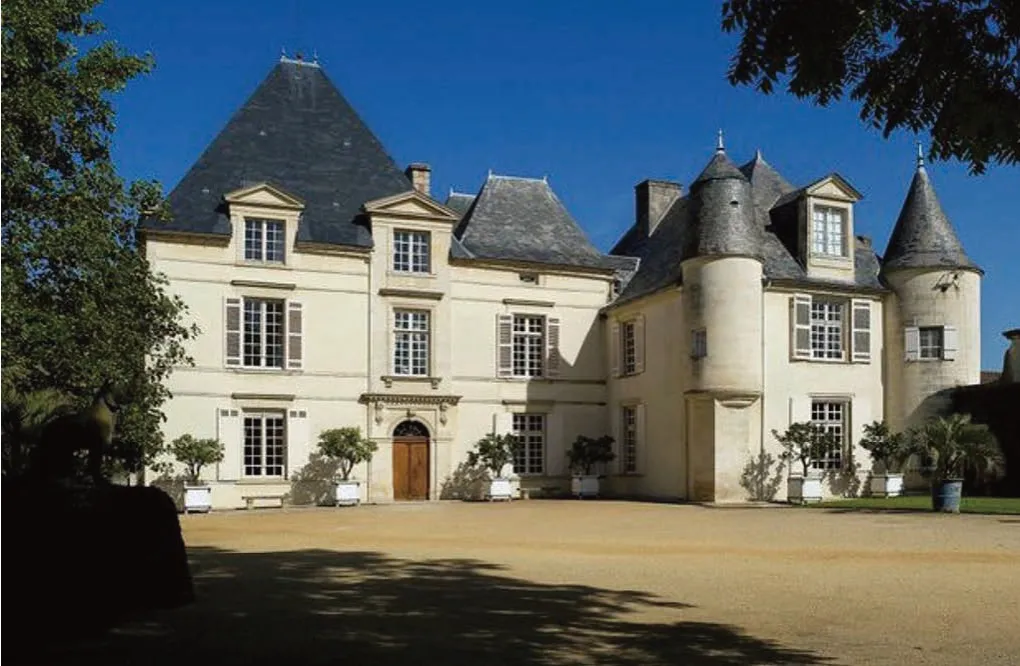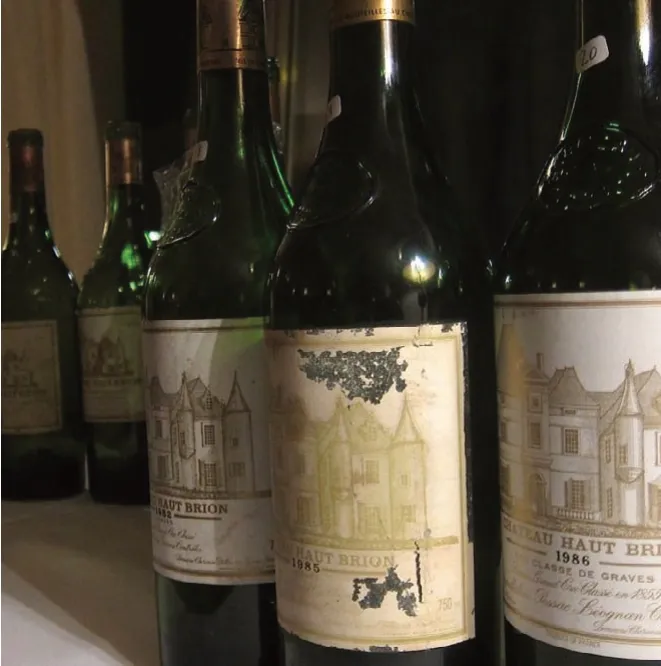红颜容,被忽视的一级名庄

David Allen MW
葡萄酒大师(Master of Wine);葡萄酒信息搜索网站Wine-Searcher(葡萄酒搜索引擎)的葡萄酒总监。从业近30年,具有丰富的葡萄酒销售、推广、培训、品鉴等方面的知识。
我一直挺困惑为什么红颜容酒庄看起来就像是波尔多5个一级列级庄里面最被忽视的一个。作为最早被列为1855年列级庄里4个一级庄(直到1973年木桐酒庄才被列入一级庄),红颜容在Wine-Searcher的“波尔多最多搜索和最贵搜索的葡萄酒”列表里却常常不如另外的4家。从历史来看不常是这样的,很多年以来红颜容都更为受欢迎且有着更高的产品溢价。
I am at a loss to understand why Haut-Brion is seemingly the least-regarded of Bordeaux's five red First Growths. Listed among the 4 original Premier Grand Cru Classe in 1855 (Mouton Rothschild was only promoted First Growth in 1973). Haut-Brion consistently appears below its four peers both in Wine-Searcher's most searchedfor and of most expensive Bordeaux lists.Historically this position was not always the case, for many years Haut-Brion was far more popular and commanded significant price premiums.
红颜容可以称得上是第一个出现的葡萄酒品牌。在17世纪的中期酒庄的拥有者蓬塔克·阿诺德三世勋爵创造了这一高品质的葡萄酒来吸引英国王室的新国王,查理二世。一本写于1660年的宫廷酒窖典籍里就记录了169瓶“Hobriono”葡萄酒。很快这葡萄酒就在讲究时尚的伦敦客间流行起来,1663年作家Samuel Peyps曾写下在伦敦Lombard街的酒馆里喝“Ho Bryen”的经历。1666年那场伦敦大火之后,蓬塔克·阿诺德三世之子,Francois Auguste在伦敦建起他们自己的酒馆,名为Pontac’s Head。于是在英国,Pontac这个名字就成为了优秀的波尔多红葡萄酒代名词。
到了1935年,酒庄由Dillon家族接手。他们很明智地保留了Georges Delmas的酒庄代管服务。这一决定深远地影响了酒庄的未来,它为酒庄带来了革新以及持久力。当Georges Delmas在1961年退休时他已经为酒庄服务40年,且接棒的是他的儿子Jean-Bernard。今天接手的是他的儿子Jean-Philippe Delmas主管酿造团队,今年可是这一家族掌管酒庄的酿造第100年。
在Jean-Bernard Delmas管酿造的42年里(1961-2003),酒庄引入了很多先锋性的改革。20世纪60年代,红颜容是波尔多优秀的酒庄里面第一家采用不锈钢发酵罐,采用控温手段进行酿造的。红颜容的分体式发酵罐可以允许上部进行发酵而下部则进行苹果酸乳酸转化。
因为相信酿造优秀的葡萄酒需要混合优秀的葡萄植株克隆,Delmas开始跟INRA及农业局于1972年共同扩展葡萄园植株克隆的多样性。今天每公顷红颜容的葡萄园上都包含了10-15种葡萄的克隆。这在园间就保证了优秀的多样性。
Delmas三代人引领红颜容酿酒团队100年时间,这一持续纪录对应的是酒庄的主人,Dillon家族也掌管了酒庄86年,为酒庄贡献了3任掌舵者。今天家族的族长,卢森堡罗伯特王子,也同样是Domaine Clarence Dillon的总经理。



尽管红颜容独特地将创新和延续性结合在一起,但有几个理由使得他略显过时。很可能是因为它的产量较小ÿ红颜容的年产量只有10000箱左右,大概是同行的一半数量使得它卖得很少。也可能是红颜容不在梅多克,使得它跟不上其他一级庄的脚步。这不仅仅是地理位置的因素,还涉及酒庄葡萄园里的冈赞砾石质土壤。这种土壤让梅乐这个品种得以蓬勃发展。红颜容高比例的梅乐使得它的酒更大气、更丰满,也常常有更高酒精度的风格,比起梅多克其他的一级庄以赤霞珠主导的葡萄酒要没那么干净。对我来说,红颜容至少能够达到跟其他一级庄的水准,但它现今没法符合大家对一级庄风格的期待。
Haut-Brion was arguably the first wine brand.In the mid-1600s the estate's owner, Lord Arnaud III de Pontac, created a high-quality wine to appeal to the court of England's new King, Charles II. A palace cellar-book of 1660 references 169 bottles of the "wine of Hobriono". Soon the wine was popular with fashionable Londoners, the writer Samuel Peyps describing drinking “Ho Bryen”in a tavern in London's Lombard Street in 1663. Following London's great fire of 1666 Arnaud de Pontac's son, Francois Auguste,established their own tavern, called the Pontac's Head, in London. In England the name Pontac became synonymous with good Bordeaux red wine.
The Dillon family have owned the estate since 1935. Sensibly they retained the services of the régisseur Georges Delmas.This decision did much to shape the estate’s future, by both revolutionising it and providing its stability. When Georges retired in 1961 he had been in the position for 40 years and was superseded by his son Jean-Bernard. Today Jean-Philippe Delmas heads up the winemaking team,he is Jean-Bertrand's son and this year marks 100 years of their family's oversight of winemaking at the property.
In the 42 years (1961-2003) Jean-Bernard Delmas oversaw winemaking there, the estate implemented pioneering changes.In the 1960's Haut-Brion was first the of Bordeaux's great estates to use stainlesssteel fermenters, facilitating temperaturecontrolled fermentations. Haut-Brion's split-level vats allow fermentation in the top half and malolactic conversion below.
Believing that making great wine requires an assemblage of excellent clones Delmas,began working with the INRA and the Chambre d'Agriculture, in 1972, to increase the vineyards' clonal diversity. Today each hectare of Haut-Brion's vineyards comprises 10-15 different clones. This ensures excellent diversity within the estate's vineyards.While three generations of the Delmas family have headed Haut-Brion's winemaking team for 100 years this record of consistency is mirrored by its owners,the Dillon family, who in 86 years have contributed 3 presidents to the company.Today the head of that family, Prince Robert of Luxembourg, is Président Directeur Général of Domaine Clarence Dillon.
Despite its unique combination of innovation and consistency there are several reasons Haut-Brion is slightly out of fashion.Possibly because it produces less wine -Haut-Brion's annual production of around 10,000 cases, can be half that of its fellows,making it less-traded. Possibly the fact Haut-Brion is not on the Medoc ensures it is out of step with its fellow First Growths.This is not simply a question of geography but relates to the gunzian-gravels and clays which comprise their vineyards. These soils allow Merlot to flourish. The higher percentage of Merlot in Haut Brion's blend makes the wines broader, richer and often more alcoholic in style than the leaner Cabernet Sauvignon-dominated Medoc First Growths. To my mind Haut-Brion is at least the equal of its fellow first growths,but its wines don't currently fit the style expected of First Growths.

